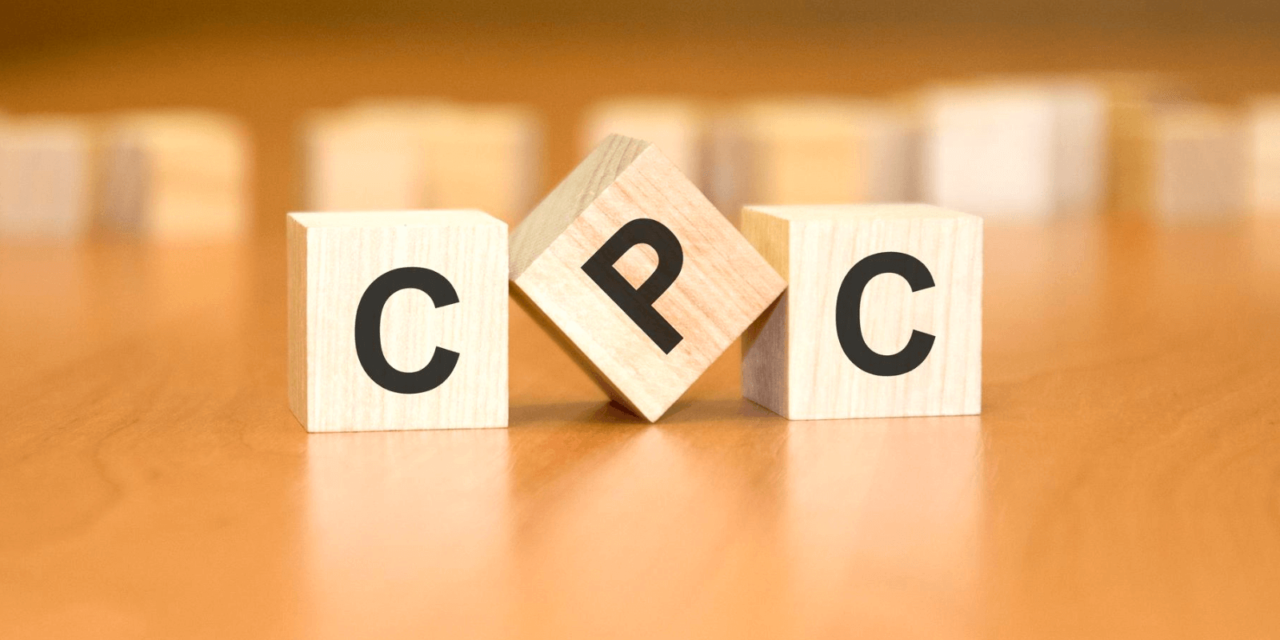With CPC advertising, you only pay when someone clicks on your ad. This makes CPC a great way to get your site in front of people who are interested in what you have to say.
CPC is a key metric for measuring the effectiveness of advertising campaigns. It allows you to compare the cost of your campaign with the number of leads or sales that it generates. The lower your CPC, the more effective your campaign is.
As you know that there are other models in the advertising world/online advertising CPV (cost per view) and CPM (cost per thousand impressions). With CPV, you pay every time your ad is viewed. CPM is similar, but you pay for every 1,000 times your ad is viewed, regardless of whether anyone clicks on it.
Both CPV and CPM can be effective but tend to be more expensive than CPC. That’s because you’re paying for ad views, even if those viewers don’t click through to your site.
As compared to both above models the CPC model is the most cost-effective way to advertise online.
The Formula of CPC is:
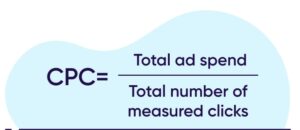
Are You Aware Of What Is The Benchmark Of Avg CPC Across The Industries?
According to WordStream, the average CPC in Adwords across all industries is $2.69 on the search network and $0.63 on the display network.
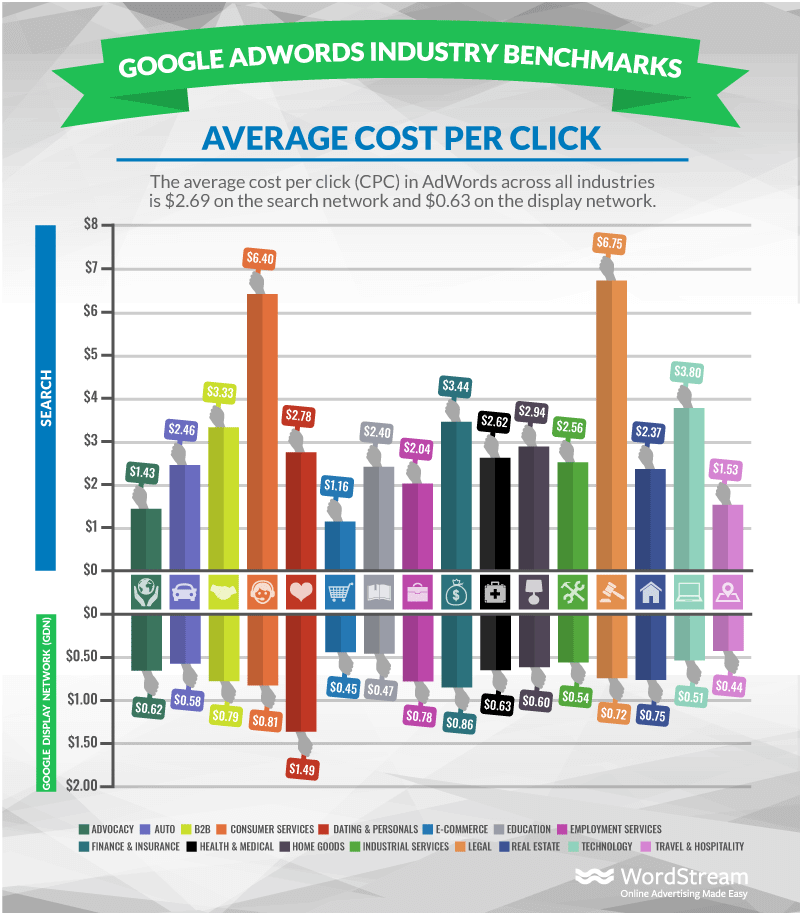
[Source: https://www.wordstream.com/blog/ws/2016/02/29/google-adwords-industry-benchmarks]
According to the above benchmark you can get ideas for your client that your average CPC has been settled down near the above value for your respective industries.
It’s no news that online ads don’t carry a one-size-fits-all price tag. Different countries demand different Cost Per Click rates, and although it may not be fixed for each country, understanding the average CPC can give advertisers an idea of what to expect when running campaigns in certain regions across the world.
Let’s see the Average CPC by Country
The below table shows the average CPC by Country, Compared to the US average CPC(100%) which ranges between $1 & $2 on Google Search for a high-volume keyword.
Here we have calculated percentages to the US CPC (100%). Suppose, CPC in the US for the particular keyword is $2, then it would be 0.8$ in France which is 40% for the same keyword.
| Avg CPC | Country |
| 110%-101% | United Arab Emirates |
| 100%-96% | Austria, United States |
| 95%-91% | Australia, Brazil |
| 90%-86% | New Zealand, United Kingdom |
| 85%-81% | Canada, Chile |
| 80%-76% | Italy, Switzerland |
| 75%-71% | Germany, Turkey |
| 70%-66% | Finland, Jamaica, Norway |
| 65%-61% | Dominican Republic, Ireland |
| 60%-56% | Greece, Iceland, Portugal |
| 55%-51% | Japan, Lebanon, Spain, Sweden |
| 50%-46% | Armenia, Cambodia, Israel, Mexico, South Africa |
| 45%-41% | Algeria, Belize, Denmark, Nepal, Netherlands, Singapore, Thailand |
| 40%-36% | Croatia, France, Indonesia, Macedonia, Nicaragua, Oman, Rwanda, Saudi Arabia, Trinidad, and Tobago |
| 35%-31% | Belgium, Bulgaria, Egypt, Kuwait, Libya, Panama, Romania, Uganda |
| 30%-26% | Albania, Costa Rica, El Salvador, Jordan, Kenya, Malaysia, Peru, South Korea, Tunisia, Zimbabwe |
| 25%-21% | Argentina, Bahamas, Bangladesh, India, Hungary, Morocco, Philippines, Slovakia, Sri Lanka, Uruguay, Vietnam |
| 20%-16% | Bolivia, Colombia, Ecuador, Luxembourg, Mauritius, Namibia, Pakistan, Poland, Qatar, Russia |
| 15%-11% | Bahrain, China, Guyana, Latvia, Lithuania, Montenegro, Tanzania, Venezuela |
| 10%-6% | Liberia, Moldova, Serbia, Slovenia, Ukraine, and Others (limited data) |
[Source: https://bydik.com/average-cost-per-click-adwords/]
A Brief Overview Of How CPC Works:
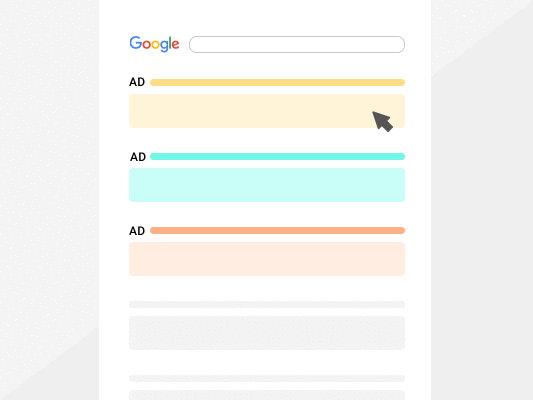
When you search for something online, there are often ads that show up along with the regular results. These are called search engine results pages, or SERPs.
To show up on these SERPs, businesses need to bid on target keywords. The amount they bid will determine where their ad appears on the page. The higher the bid, the more likely their ad will be seen by searchers.
The most common tool for running these kinds of ad campaigns is Google Ads. In your account, you can create specific campaigns, set up “ad groups” (i.e., sets of related ads), write ad copy, and place bids for particular keywords.
Once you’ve set up your account and campaigns, you’ll need to pay attention to your CPC, or cost per click. This metric tells you how much you’re paying, on average, for each click on your ad.
As I show above, you can calculate your CPC by dividing the total cost of your campaign by the number of clicks it received. For example, if you spent $7 on your campaign and it resulted in 2 clicks, your CPC would be $3.5.
Paying attention to your CPC is important because it can tell you a lot about the success of your search advertising campaigns.
Remember that a high CPC means you’re overpaying for your target keywords. A low CPC means you’re underpaying.
How to calculate CPC:
You can calculate the CPC according to the above formula. However, you can use more accurate CPC metrics to evaluate your ad strategy. which contains:
- Maximum Cost Per Click
- Average Cost Per Click
- Actual Cost Per Click
- Manual Cost Per Click
Depending on your individual goals, you can also select a particular bidding strategy. Let’s begin by looking over some basic CPC definitions.
⇒ What is the Maximum Cost Per Click?
Maximum cost per click (CPC) is the highest amount that an advertiser is willing to pay for a single click on their advertisement.
This maximum CPC is used as a bid for a given ad in an auction-based advertising system, such as Google AdWords. The advertiser’s maximum CPC bid is used to determine the ad’s placement and visibility in the search or display network.
If the advertiser’s maximum CPC bid is higher than the current highest bid, their ad will be placed higher in the search or display network.
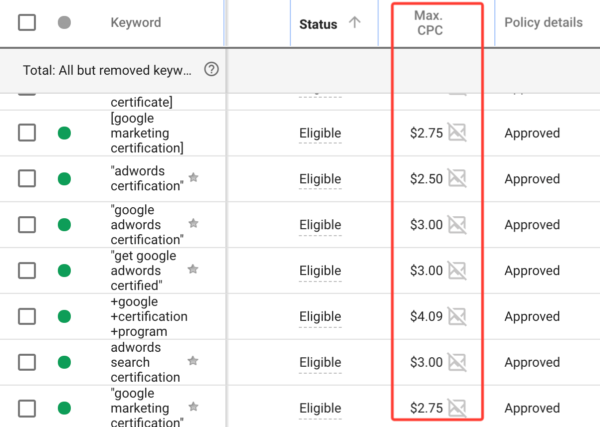
⇒ What is the Average Cost Per Click?
Average cost per click (CPC) is the average amount that an advertiser pays for a single click on their advertisement.
This is calculated by dividing the total cost of an advertising campaign by the number of clicks received.
Let’s assume that your ad received two clicks: one click costs $1.00, and the other costs $3.00. Your total cost for both clicks is $4.00.
Divide $4.00 (your total cost) by 2 (your total number of clicks), and you get $2.00. So, in this case, your average CPC is $2.00.
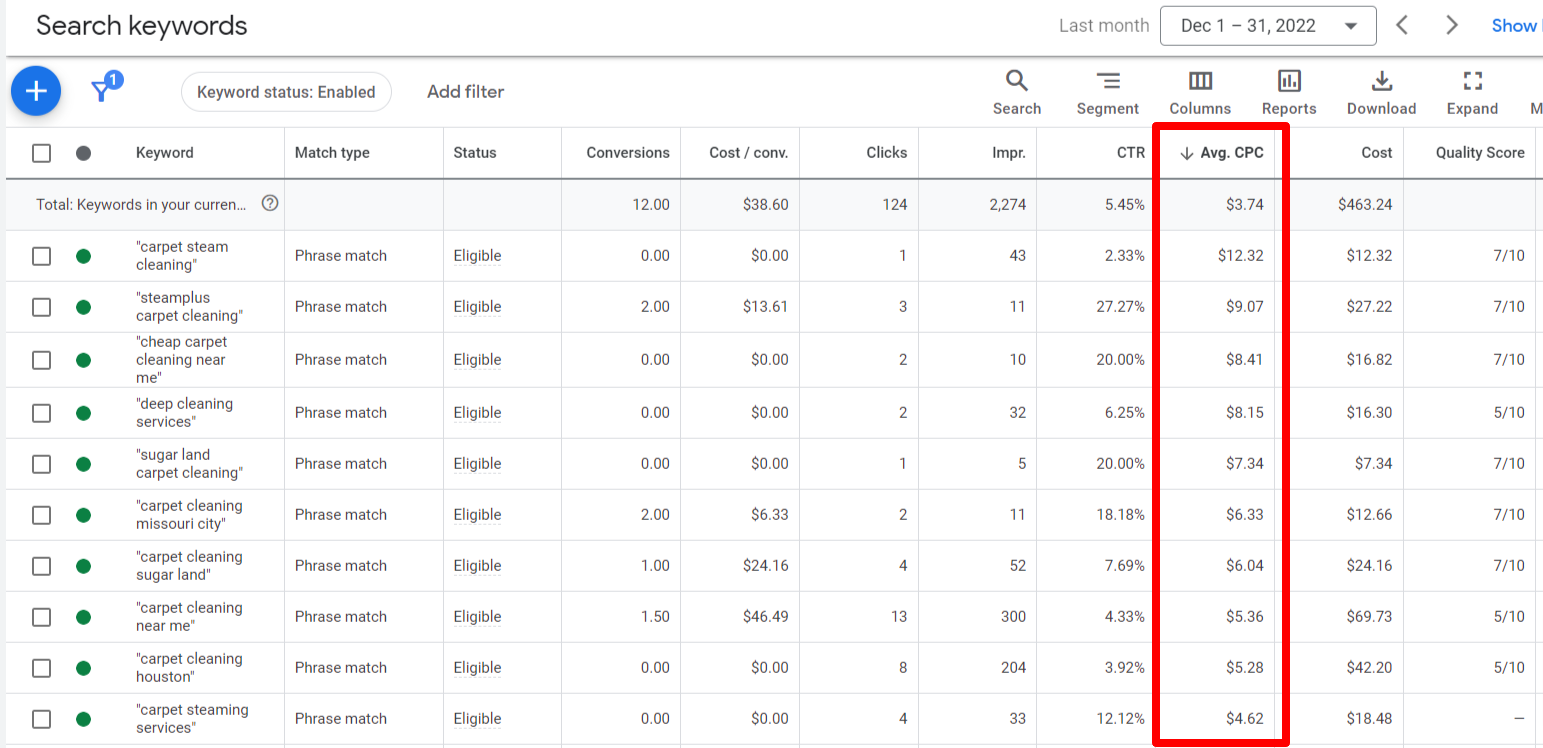
⇒ What is the Actual Cost Per Click?
Actual cost per click (CPC) is the actual amount that an advertiser pays for a single click on their advertisement.
This can be different from the maximum cost per click (CPC) that the advertiser sets as their bid, as it may be determined by factors such as the advertiser’s Quality Score and the competition for ad space.
Quality Score is a metric used by Google Ads to measure the relevance and performance of an advertiser’s keywords, ads, and landing pages.
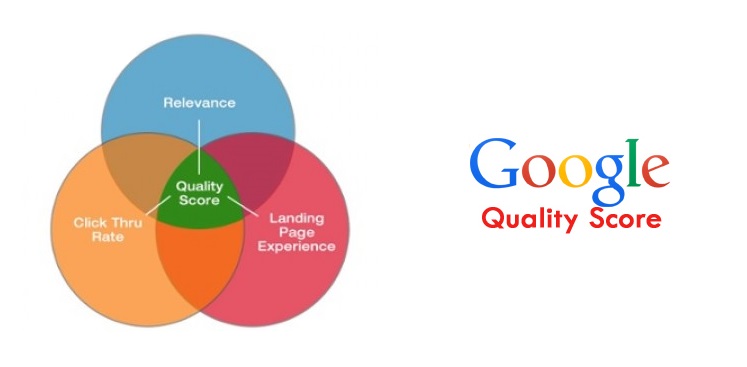
In an auction-based advertising system, such as Google AdWords, the actual CPC paid by an advertiser is determined by the ad rank of the advertiser (based on the advertiser’s maximum CPC bid and Quality Score) about the ad rank of other advertisers in the auction.
The advertiser with the highest ad rank wins the auction and pays the lowest CPC.
⇒ What is the Manual Cost Per Click?
Manual cost per click (CPC) is a method of setting bid prices for individual keywords in a pay-per-click (PPC) advertising campaign.
In manual CPC, the advertiser sets a specific bid for each keyword, rather than using an automated bidding system.
This allows the advertiser to have more control over the cost of their campaign and to tailor bids based on the expected performance of individual keywords.
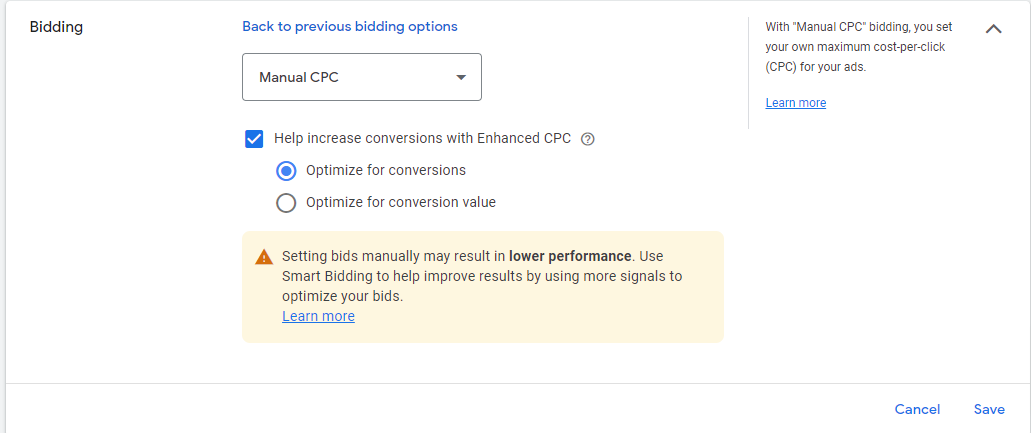
What Is Enhanced Cost Per Click?
Enhanced cost per click (eCPC) is a bidding strategy used in pay-per-click (PPC) advertising campaigns to automatically adjust bids based on the likelihood that a click will result in a conversion.
eCPC uses machine learning algorithms to analyze the performance of keywords, ads, and placements, and adjust bids in real-time based on the predicted likelihood of a conversion.
eCPC is considered to be more efficient than manual CPC, as it allows advertisers to optimize their bids for conversions, rather than clicks. It can help to increase conversions and revenue, while also reducing the cost per conversion and improving the ROI of a campaign.
If you got a high avg CPC for your campaign you can lower these metrics by applying eCPC bid. I will show my result of how I decreased my campaign’s avg CPC by 27.78% within two months by using an Enhanced CPC bid.
I have represented the data for Sept to Oct 2022 month where my Avg.CPC was settled at $20.96.

[Call only Campaign: Data from Sept to Oct 2022]
I want to decrease my campaigns’ Avg.CPC so I applied Enhance CPC bid and my result has been improving. You can see here my campaign’s Avg.CPC has been settled at $15.14 from Nov to Dec 2022 which was far better than the previous two months.

[Call only Campaign: Data from Nov to Dec 2022]
There are several ways to improve your average cost-per-click (CPC) in Google Ads.
How to Improve CPC:
⇒ Use Negative Keywords:
Add negative keywords to your campaigns to prevent your ads from showing up for irrelevant searches.
You can add negative keywords to ad groups, your larger campaign, or your entire account.
Log in to Google Ads first. Then, in the sidebar navigation, select “Keywords” and then “Negative keywords.”
You will see a blue button with plus sign click on it, and you can add negative keywords.
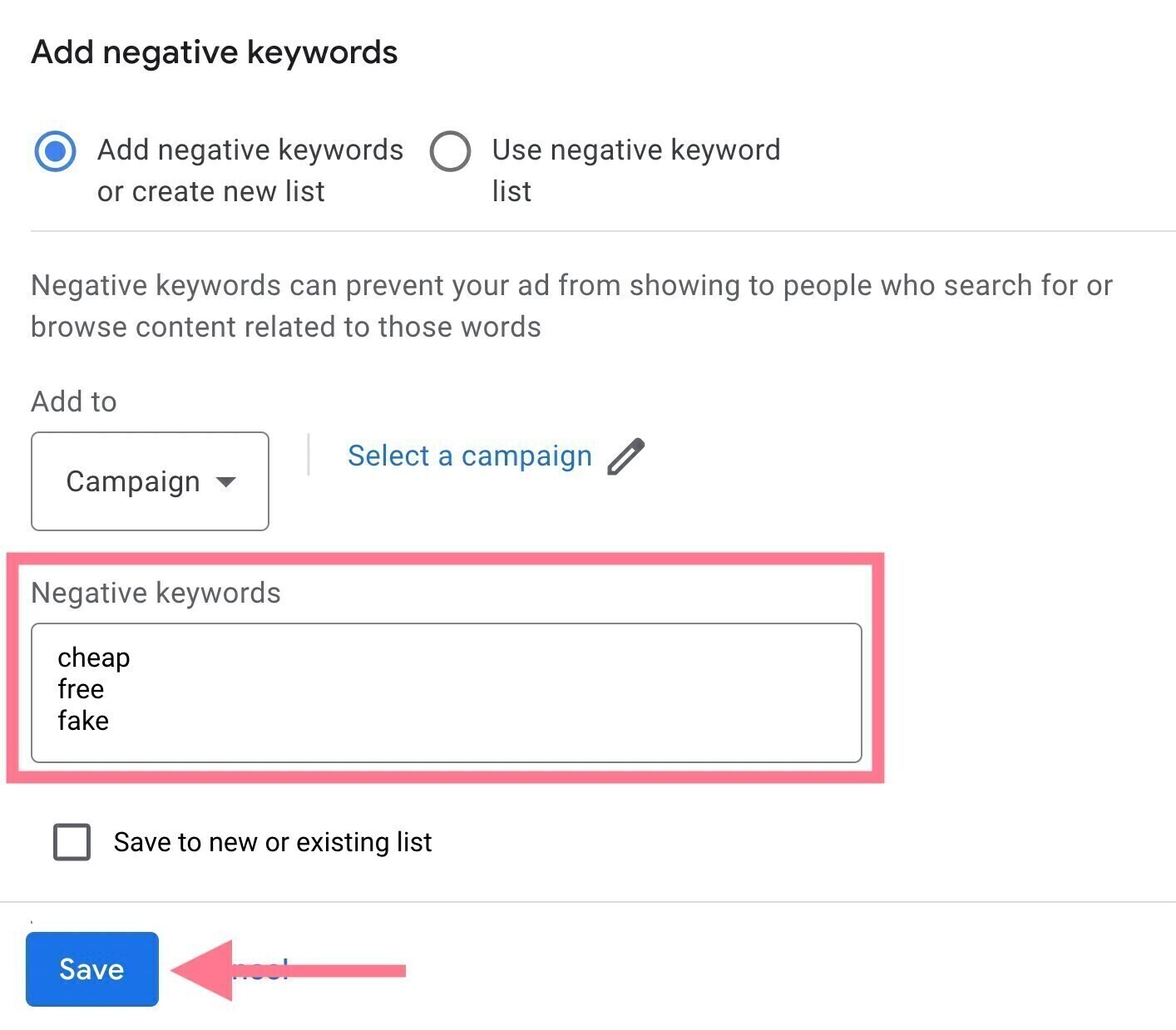
In the above example, these negative keywords would block your ads from appearing when someone searched for terms like “cheap,” “free,” or “false.”
⇒ Optimize Your Ad Groups:
Organize your keywords into tightly themed ad groups to improve ad relevance and quality score.
Ad groups allow you to split your campaign into a variety of categories, topics, or themes.
Having its keywords, targeting settings, and ads, in each ad group lets you get more granular and specific within your campaign.
Thus, by creating ad groups, you can make sure that your ads show to the ends relevant audience only.
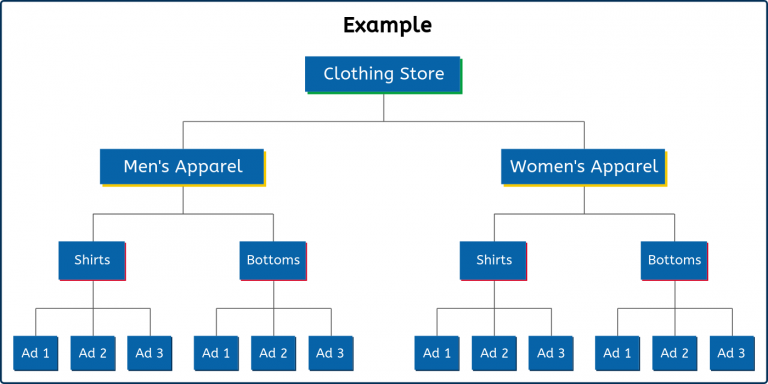
[Source:https://creativewebsitemarketing.com/google-ads-campaign-structure/]
⇒ Improve your quality score:
Google’s quality score is a measure of the relevance and usefulness of your ads, landing page, and website. Improving your quality score can lead to lower CPCs.
⇒ Use Ad Extensions:
Ad extensions, such as site link extensions and callout extensions, can improve the relevance and visibility of your ads.
⇒ Use The Right Match Types:
Reaching the right audience is essential to successful marketing campaigns.
That’s why so many advertisers use keyword match types – it ensures that their ads are seen by searchers who will be most interested in them.
Broad match keywords appeal to a larger group, while exact matches target more specific individuals and can come with higher cost-per-click rates.
Below are the keyword match types we use in Google ads.
- Broad match: Ads can show on searches related to your keyword.
- “Phrase match”: Ads can show on searches that include the meaning of your keyword.
- [Exact match]: Ads can show on searches that have the same meaning as your keyword.
⇒ Monitor & Adjust Bids:
Regularly monitor your campaigns and adjust your bids based on performance.
⇒ Use Ad Scheduling & Location Targeting:
Schedule your ads to run only when your target audience is most likely to be searching, and use location targeting to reach people in specific geographic areas.
Let me show you how you can schedule your ads.
To schedule ads, scroll down the sidebar menu on your Google Ads dashboard. Then click on “Show more”, click on “Ad Schedule” and then “Ad schedule” again.
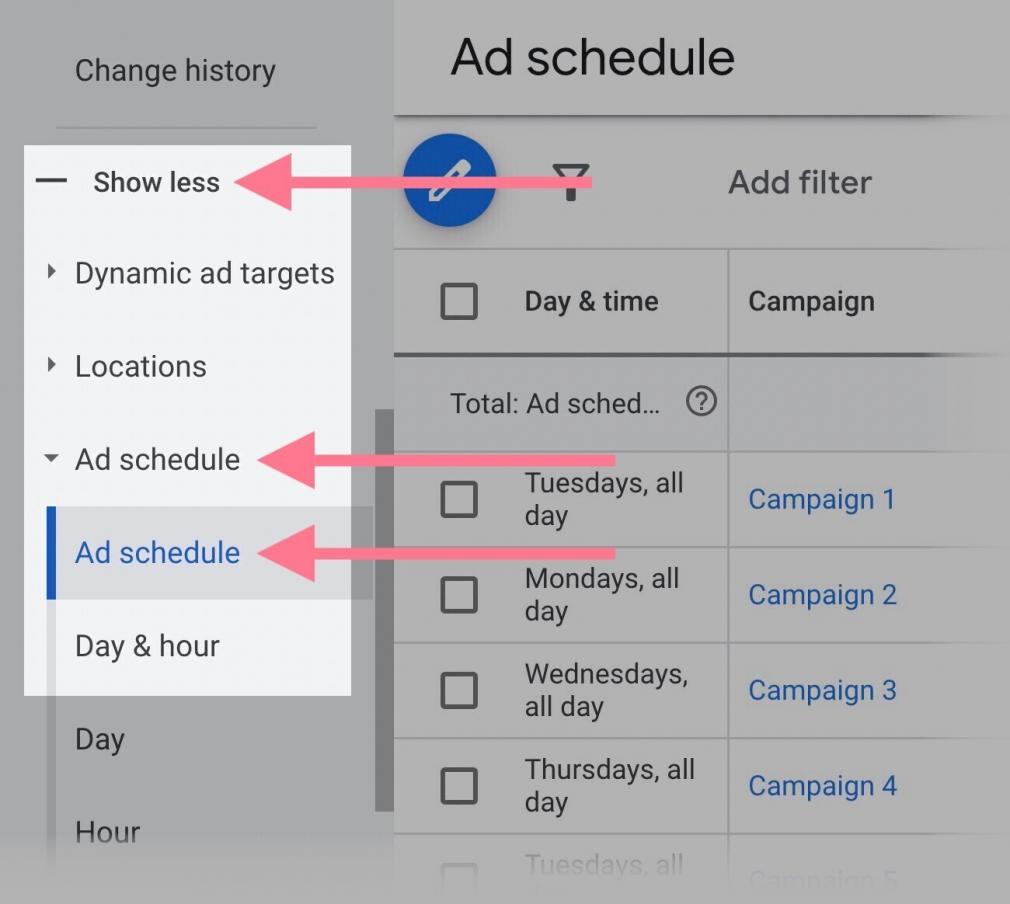
Then select the pencil icon located directly next to the sidebar navigation. then choose a campaign from the drop-down menu that appears.
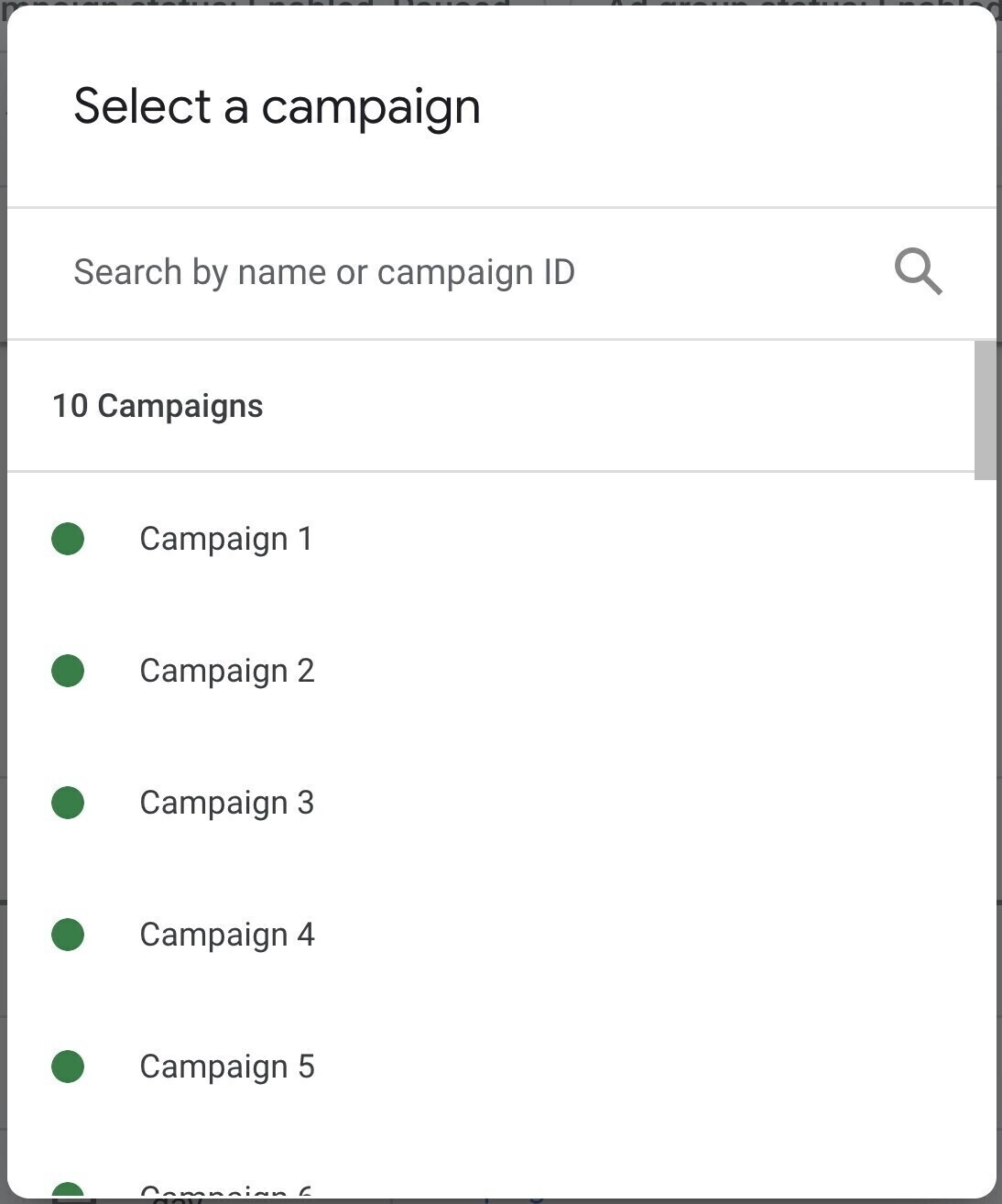
Finally, set your schedule and hit “Save.”
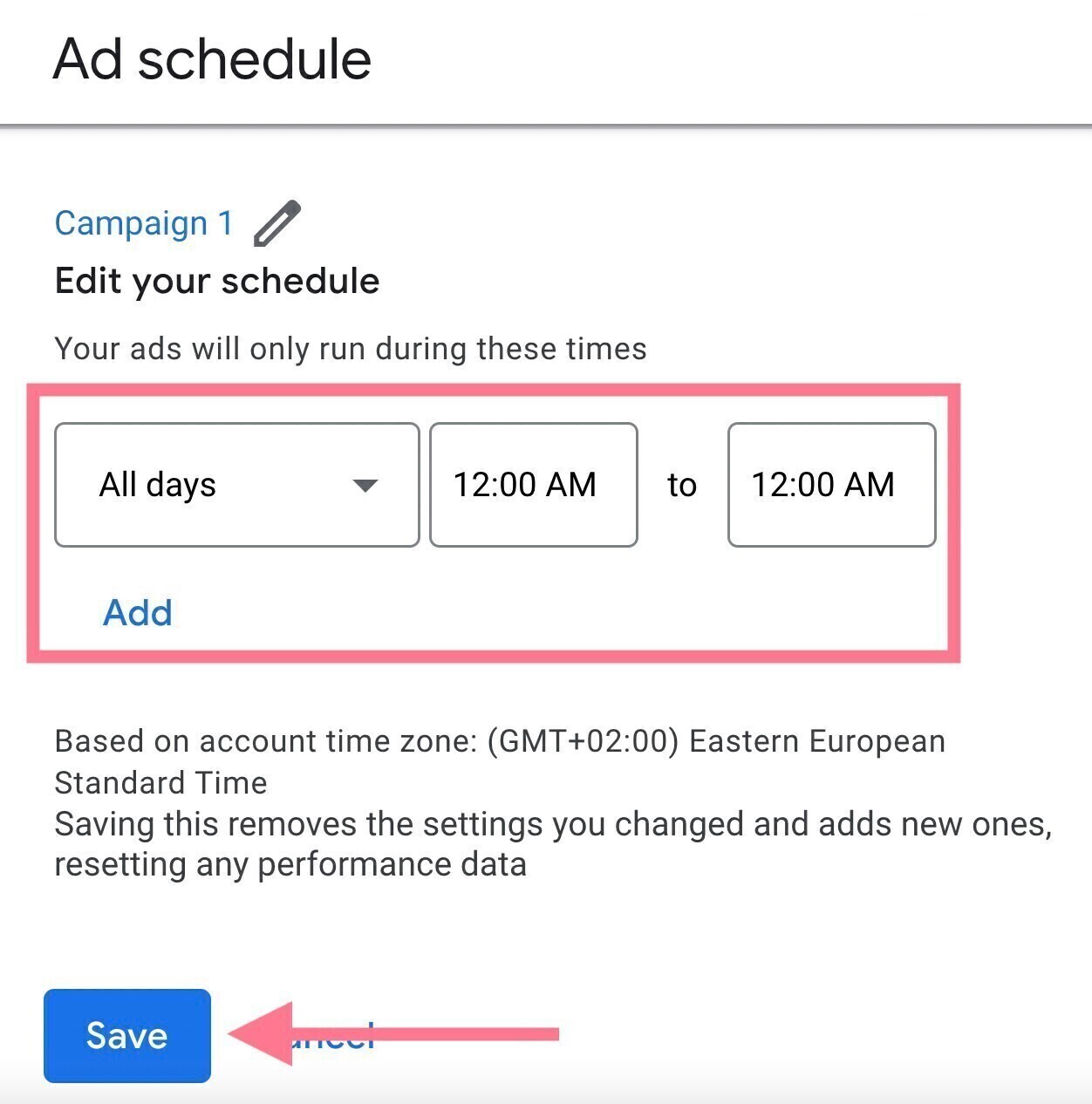
Steps to setup location targeting:
If you want to target a specific Country,
Go to your Google Ads dashboard first, then select the “Campaigns” tab from the sidebar. And then choose the campaign for which you want to set location targeting.
Then, click “More details” at the top of the page.
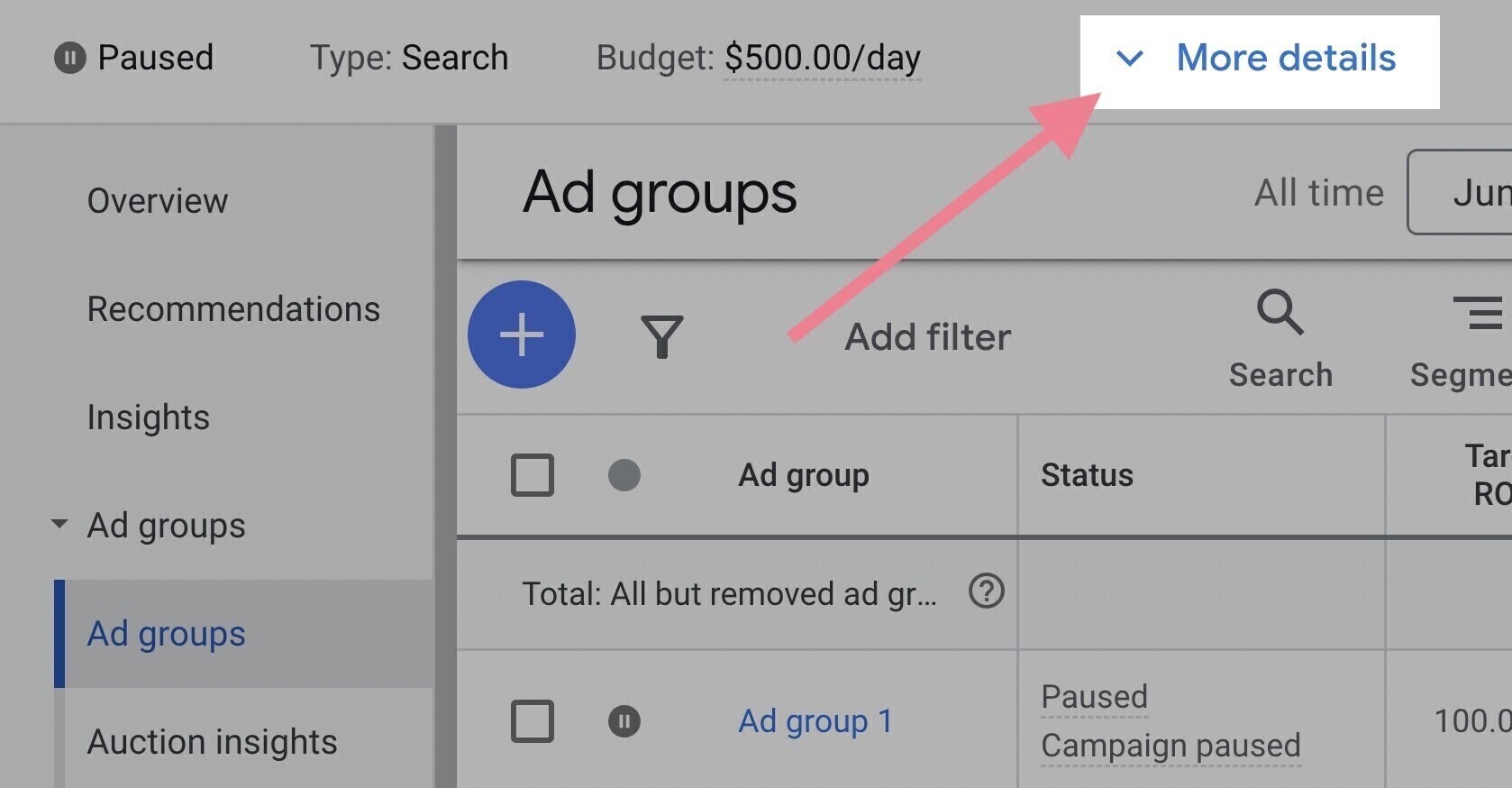
This should show a summary of your advertising campaign. On the summary page, click the “Edit in settings” button in the top right corner.
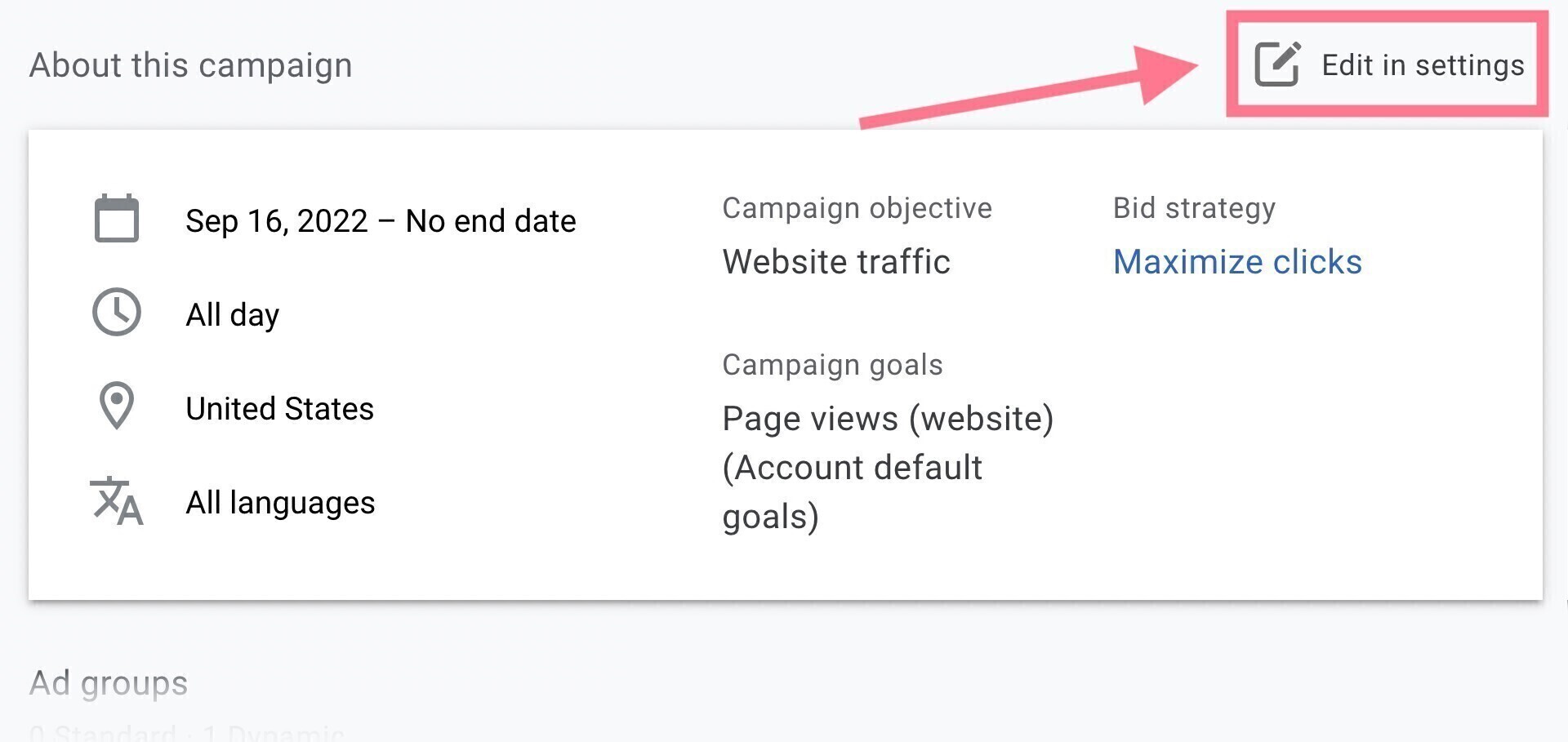
Scroll down through the different settings options until you see “Locations.” click the down arrow beside it.
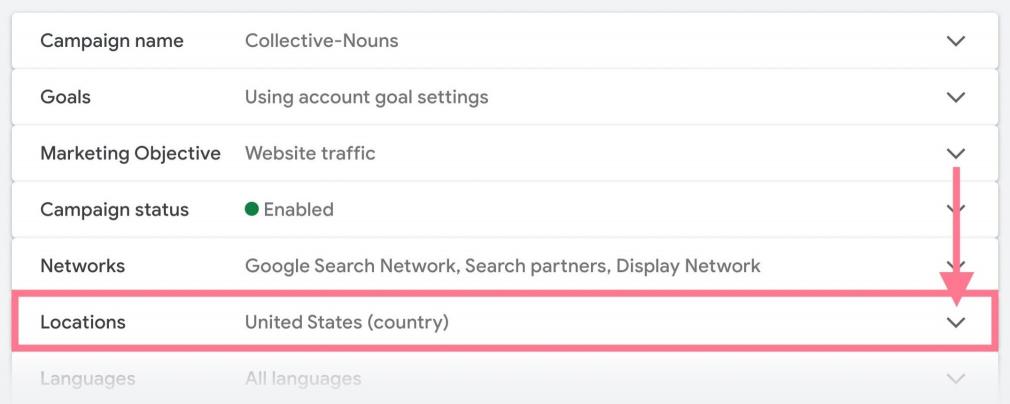
Set your target locations in the menu that appears by following the instructions. You’re done after you click “Save.”
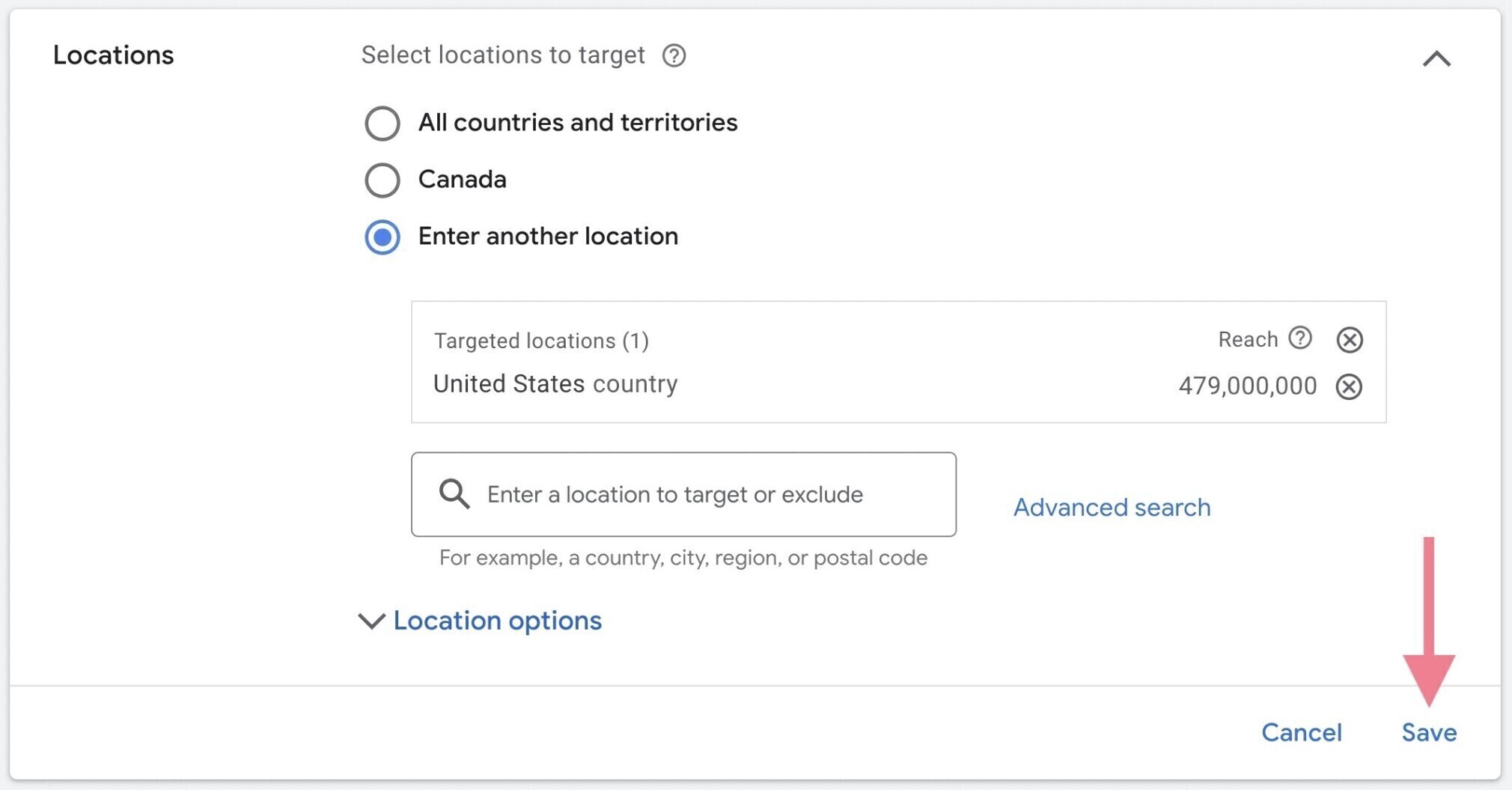
You can target multiple locations with one ad, and also target areas within a county and radius around an area.
⇒ Use Retargeting Campaigns:
retargeting allows you to show ads to people who have previously visited your website, which can increase the chances of a conversion and therefore lower the average CPC.
How To Decide What is CPC Bid Amount To Set in Google Ads:
For people who are not interested in manually setting their cost-per-click amounts, Google Ads offers automatic bidding. But for those of you who are, you can calculate your maximum cost per click by following these 8 steps.
- Figure out your profit margins
- Set a cost-per-acquisition (CPA) goal
- Set your budget accordingly
- Figure out your conversion rate
- Calculate your maximum CPC
- Estimate your traffic
- Review first-page bid estimates
- Adjust your maximum CPC accordingly
Let’s discuss the above eight points in detail.
⇢ For each keyword or keyword group, determine your targeted profit margin for each matching sale or sales lead.
So, if you are selling perfume on your website, decide how much you want to make for each one. For example, that amount might be $20.
⇢ Determine how much you are willing to spend on each conversion associated with a particular keyword or group of keywords.
A good basic rule is to fix this figure equal to your desired profit margin. So in the case of perfume, you’d be willing to spend as much as $20.
⇢ Use your desired profit margin, maximum cost per conversion, and any other cost figures to come up with your product prices.
Maybe you did the packing of perfume by yourself and only had to pay $20 per perfume packing for materials.
Electricity for your studio costs about $10 per perfume, you determined. Factor in the $20 profit margin and $20 maximum cost per conversion, and you sell your perfume for $70 a piece.
⇢ If you want to maximize your sales and profits, it’s important to know the conversion rate for each of your keywords or keyword groups.
If you have some data on hand from previous campaigns, use that figure as a starting point – 2% is usually a good baseline. For less established businesses that don’t have any existing metrics yet, start with 1%.
With this information at hand, you can make more informed decisions when driving customers down their purchase journey!
⇢ Calculate your maximum cost per click by multiplying your maximum cost per conversion by your conversion rate.
So, increase the 3% conversion rate from your previous paid search marketing campaigns by your $20 maximum cost per conversion. As a result, your maximum cost per click comes to 60 cents.
⇢ For the current maximum CPC rates for each of your various keywords, check out Google’s Traffic Estimator. Enter “perfume” for example, in the keywords field.
You’ll see that the top three ad spots have an estimated average cost per click of $.62 and a maximum cost per click of $1. This can lead you to increase your 60-cent cost per click.
⇢ You can also use Google’s first-page bid estimates to fine-tune your maximum cost-per-click amounts.
The Keyword Analysis tab of your AdWords account contains the data that calculates the cost-per-click bid necessary for your ad to show up on the first page of search results for a certain keyword or keyword phrase.
⇢ Change your maximum cost-per-click amounts based on your ad’s performance. Adjust your maximum cost-per-click numbers if you noticed that some of your ads have high conversion rates while others have poor conversion rates.
For example, increase your maximum cost per click amounts for the high-converting ads so they get even more qualified traffic and bring you more profit.
As you choose your maximum Google CPC in AdWords, keep in mind that placement factors other than bids also come into play. Additionally, you need to work on boosting your ad’s Quality Score. You can get this by improving the quality of your landing page, increasing the relevance of your keywords and ads, and improving your click-through rate.
I hope you get an idea about how CPC works and what it is while reading this blog.
Do you want to keep learning? Here are some recommended resources:
- https://www.brandingmarketingagency.com/blogs/google-ads-cost-for-small-business/
- https://www.brandingmarketingagency.com/blogs/create-the-best-google-adwords-campaign/

